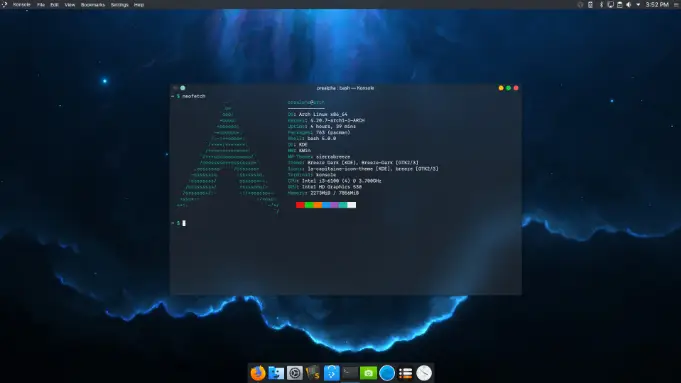
Pico Text Editor Download Linux Learning Unix For Mac
Download the latest version of Pico or visit us on GitHub. You can edit Pico's composer.json to include 3rd-party plugins and themes, or simply add your own.
It's time to write your first application! These detailed instructions are for users of Solaris OS and Linux. Instructions for other platforms are in 'Hello World!' for Microsoft Windows and 'Hello World!' for the NetBeans IDE.
If you encounter problems with the instructions on this page, consult the Common Problems (and Their Solutions).
- Creating Your First Application
A Checklist
To write your first program, you'll need:
The Java SE Development Kit 8 (JDK 8)
You can download the Solaris OS or Linux version now. (Make sure you download the JDK, not the JRE.) Consult the installation instructions.
A text editor
In this example, we'll use Pico, an editor available for many UNIX-based platforms. You can easily adapt these instructions if you use a different text editor, such as
vioremacs.
These two items are all you'll need to write your first application.
Creating Your First Application
Your first application, HelloWorldApp, will simply display the greeting 'Hello world!'. To create this program, you will:
Create a source file
A source file contains code, written in the Java programming language, that you and other programmers can understand. You can use any text editor to create and edit source files.
Download Apple iMovie 10 Crack Free. Apple iMovie Crack For Mac & Windows Provides a plethora of tools that will help you turn ordinary home videos into captivating Hollywood-style trailers that are fun to watch and share. Apple iMovie allows you to create stunning HD movies and Hollywood-style trailers. You can browse your video library and easily share your favorite videos. Download imovie 10.1.7 free for mac.
Compile the source file into a .class file
The Java programming language compiler (
javac) takes your source file and translates its text into instructions that the Java virtual machine can understand. The instructions contained within this.classfile are known as bytecodes.Run the program
The Java application launcher tool (
java) uses the Java virtual machine to run your application.
Create a Source File
To create a source file, you have two options:
You can save the file
HelloWorldApp.javaon your computer and avoid a lot of typing. Then, you can go straight to Compile the Source File.Or, you can use the following (longer) instructions.
First, open a shell, or 'terminal,' window.
A new terminal window.
When you first bring up the prompt, your current directory will usually be your home directory. You can change your current directory to your home directory at any time by typing cd at the prompt and then pressing Return.
The source files you create should be kept in a separate directory. You can create a directory by using the command mkdir. For example, to create the directory examples/java in the /tmp directory, use the following commands:
To change your current directory to this new directory, you then enter:
Now you can start creating your source file.
Start the Pico editor by typing pico at the prompt and pressing Return. If the system responds with the message pico: command not found, then Pico is most likely unavailable. Consult your system administrator for more information, or use another editor.
When you start Pico, it'll display a new, blank buffer. This is the area in which you will type your code.
Type the following code into the new buffer:
Be Careful When You Type
javac) and launcher (java) are case-sensitive, so you must capitalize consistently.HelloWorldApp is not the same as helloworldapp.
Save the code in a file with the name HelloWorldApp.java. In the Pico editor, you do this by typing Ctrl-O and then, at the bottom where you see the prompt File Name to write:, entering the directory in which you wish to create the file, followed by HelloWorldApp.java. For example, if you wish to save HelloWorldApp.java in the directory /tmp/examples/java, then you type /tmp/examples/java/HelloWorldApp.java and press Return.
You can type Ctrl-X to exit Pico.
Compile the Source File into a .class File
Bring up another shell window. To compile your source file, change your current directory to the directory where your file is located. For example, if your source directory is /tmp/examples/java, type the following command at the prompt and press Return:
If you enter pwd at the prompt, you should see the current directory, which in this example has been changed to /tmp/examples/java.
If you enter ls at the prompt, you should see your file.
Results of the ls command, showing the .java source file.
Now are ready to compile the source file. At the prompt, type the following command and press Return.
The compiler has generated a bytecode file, HelloWorldApp.class. At the prompt, type ls to see the new file that was generated: the following figure.
Results of the ls command, showing the generated .class file.
Now that you have a .class file, you can run your program.
If you encounter problems with the instructions in this step, consult the Common Problems (and Their Solutions).
Run the Program
In the same directory, enter at the prompt:
The next figure shows what you should now see.
The output prints 'Hello World!' to the screen.
Congratulations! Your program works!
If you encounter problems with the instructions in this step, consult the Common Problems (and Their Solutions).